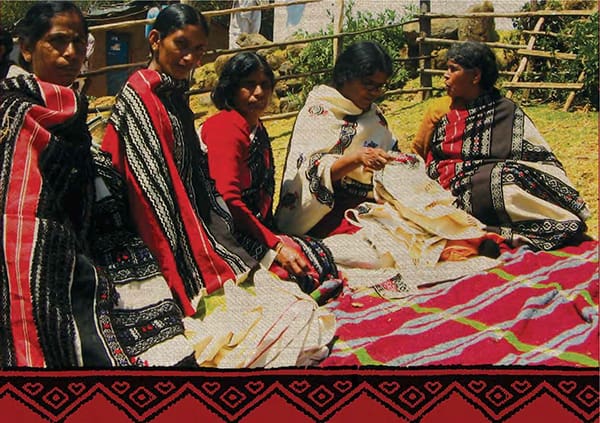A few minutes’ drive from Udhagamandalam, or Ooty as it is popularly known, will take you to the beautiful green outskirts that house the arched ‘Mundhs’, traditional settlements of the Todas. Forming one of the 18 tribal groups found in the Nilgiris in Tamil Nadu, the Toda people are known for a number of aspects, the most widely proclaimed of all being the embroidery that emerges from the area.
The Toda Embroidery, also locally known as “Pukhoor”, is an art work among the Toda pastoral people of Nilgiris, in Tamil Nadu, made exclusively by their women. The embroidery, which has a fine finish, appears like a woven cloth but is made with the use of red and black threads with a white cotton cloth background. Both sides of the embroidered fabric are usable and the Toda people are proud of its heritage. Both men and women adorn themselves with the embroidered cloaks and shawls.
The Todas (also known by names such as Tudas, Tudavans, and Todar) who make this embroidery live as one small community, population of 1,600 spread over 69 settlements. About 400 of them are stated to be engaged in the embroidery work in the Nilgiri Hills in the higher elevations of the Nilgiri plateau, in Tamil Nadu. Apart from their vocation as herdsmen of buffaloes and cultivation of grasslands, they are also involved in the tradition of making many handicrafts items. This includes traditional black and red embroidery practiced by the women of the community. The embroidery is usually made on their cloaks called “Pootkhuly” which is draped by both women and men.

The distinctive feature of the embroidery is that the patterns are based on the thread counts unlike modern embroidery, which is dependent on set patterns and designs. The most interesting fact is that the indigenous Toda women without modern numerical literacy skilfully embroider patterns with geometric precision without any external aids such as scales/patterns. Yet another feature distinguishes the embroidery from modern embroidery is that the reverse side is equally beautiful with no signs of hanging threads and knots. Naturally, that requires significant time and effort but the beauty of the final product fully justifies it.
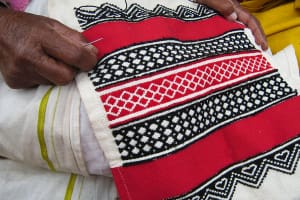
The embroidery is done on specific fabrics with specific colours. The primary colours used are red and black. The thickness of the thread ensures that the pattern is finished with an embossed look.
RAW MATERIALS USED
The main raw material used were hand woven unbleached matted and loosely woven cotton fabric, needle and two ply woollen embroidery thread. The fabrics were purchased from Karoor, near Tirupur Tamil Nadu. The women were ordering the fabric as a bundle of 1000 meters. The threads used for the embroidery are wool which are locally available in the market.
The traditional shawl uses fabric with wide bands in red at both ends on which striking geometric patterns are embroidered. It is common to find more than nine intricate designs on a single piece.
COLOURS:
The chosen colour of the base fabric is light cream or white. The colours of the woollen threads are red, black and occasionally blue. The traditional patterns were limited to red and black threads. The colours symbolize their cultural beliefs: the base WHITE indicates purity and innocence; RED depicts adolescence and youth; BLACK depicts maturity.
MOTIFS:
There are no pattern books for Toda embroidery. The patterns reflect the creativity of the Toda women who conjure up a pattern in their minds and then transfer it on a piece of cloth. Most of the inspiration is derived from the nature, day to day activities, mythological stories and colours of flora and fauna of the Nilgiris. The Buffalo horn is an important motif because the buffalo is sacred for the Todas. The motifs commonly used are the Sun, the Moon, the Stars, flowers, mountains, etc.
Toda embroidery is based on geometric. The motifs have given the name of Toda languages. In Toda language Puhur means flower.
The motifs used are:
- Huts (zigzag lines)
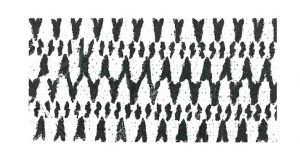
- Booth Puhur combination of heart shaped design and dots)
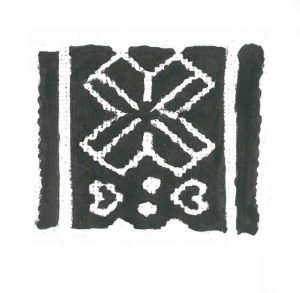
- Kinask (heart shaped designs)
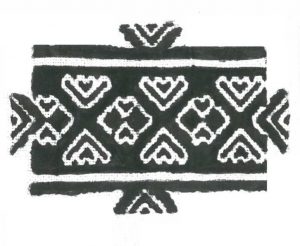
- Esh Puhur (arrow shaped design)
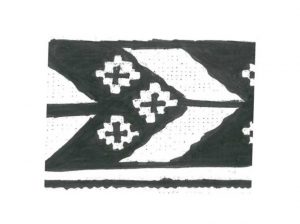
- Poth Puhur (diamond shaped designs)
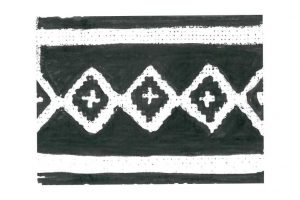
- Mad Puhur (triangle shaped designs)
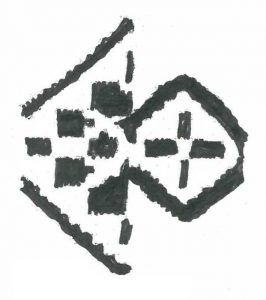
- Kose Puhur (Diamond and cross)
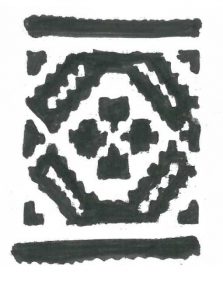
- Peesh Puhur (heart shaped design)
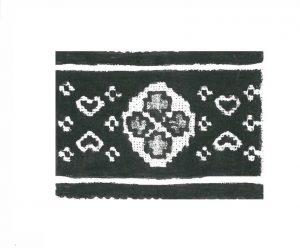
- Keb Puhur (triangle shaped design)
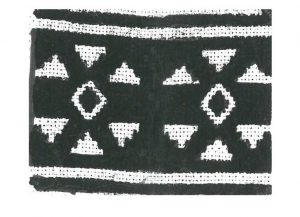
- Pish Puhur (cross shaped motif)

- Kood Puhur (Diamond shaped motif)
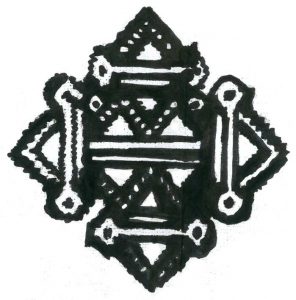
- Thur Puhur (‘W’ designs)
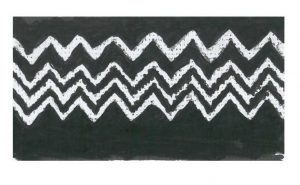
In traditional ‘Puthkuli’ shawl, the ‘Thur’ Puhur (‘W’ designs) motifs are placed in the middle, and borders are decorated with other designs. They are using their traditional shawls in their ceremonial occasions like marriage, death festivals etc.
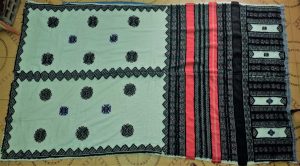
Assistance from Government and Private Agencies
Toda embroidery got GI (Geographical Identification) in September 2013. GI is a sign used on goods that have a specific geographical origin and possess qualities, reputation or characteristic that can be attributed to that place of origin. The GI registration was a great help for the marketing of the product.
Todas are getting assistance from Tamil Nadu Government and other NGO’s to market their embroidered products.
The ‘Todas Handicraft sale emporium’ is run by Tamil Nadu Government, which also helps to market these products.
With the help of the Office of the Development Commissioner (Handicrafts), Ministry of Textiles, Government of India under the ‘Ambedkar Hastashilp Vikas Yogana (AHVY) scheme, the craft has taken a new shape. The Traditional Craft has been viewed and introduction of diversified products like shoulder bag, picture frame, note book and other products of varied designs have come into existence.
The Nilgiri Adivasi Welfare Association (NAWA) is implementing promotional activities to motivate Toda women for making embroidered products. The Nilgiri Hills has expertise in marketing, design development and handicraft exhibitions and other promotional activities in order to help the growth of the empowerment of Toda women and preserving the art of Toda embroidery.
The Kotagiri women’s co-operative cottage industrial society Ltd, sells the various embroidered products. They are providing innovative and creative ideas to Toda women to increase the demand of the products.
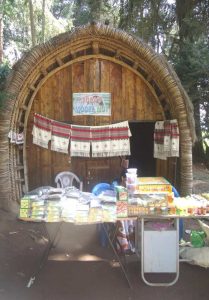
Retail Outlet in the Botanical Garden Sponsored by the Tamil Nadu Government
Today, Toda is done on pouches, cushion covers, table mats ad bags. The inspiration for using this craft for developing products is the fact that this craft is depleting and at the verge of extinction.
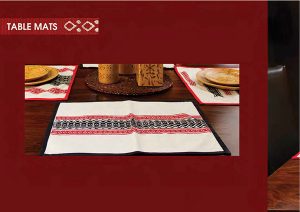
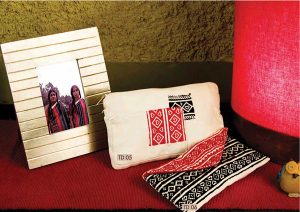
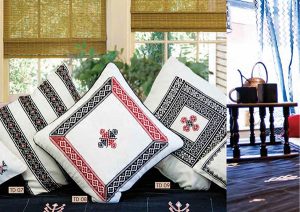
References:
- https://en.wikipedia.org/wiki/Toda_Embroidery
- https://www.fibre2fashion.com/industry-article/5423/toda-embroidery-a-tribal-embroidery
- https://www.behance.net/gallery/13725225/Toda-Embroidery-Design-Intervention
- http://www.tjprc.org/publishpapers/2-29-1496232040-2.IJTFTJUN20172.pdf
Article written by Arwa Aamir Kalawadwala, M.Sc. in Textile and Fashion Technology, from College of Home Science, Nirmala Niketan. Textile Value Chain Intern.

